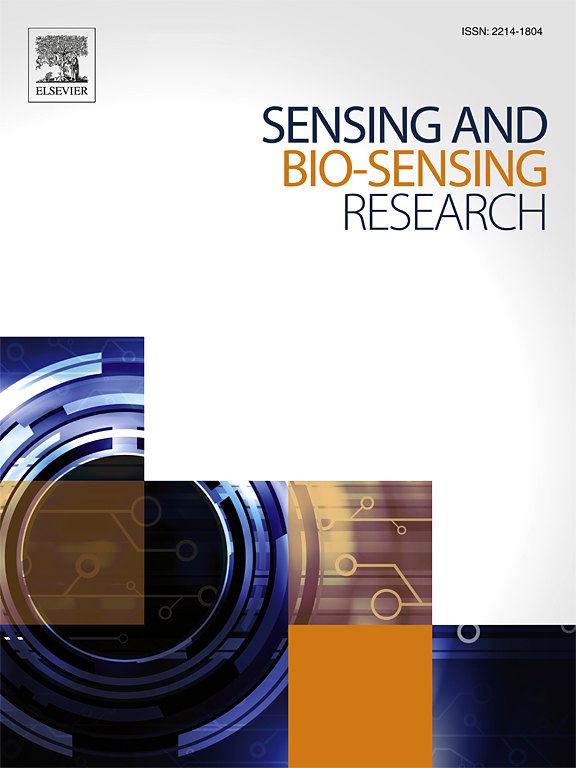Electrochemical breath profiling for early thoracic malignancy screening
IF 4.9
Q1 CHEMISTRY, ANALYTICAL
引用次数: 0
Abstract
Lung cancer remains a leading cause of cancer death globally and affects millions of lives across the globe. Early detection of lung cancer significantly improves survival rates. Screening with low-dose CT scans for high-risk individuals can lead to earlier diagnosis and better treatment outcomes. Breathomics is the systematic analysis of volatile organic compounds (VOCs) in exhaled breath to diagnose diseases and monitor health conditions. This research presents a novel electrochemical biosensor that detects eight VOCs in breath using room temperature ionic liquid (RTIL) technology. The device was tested with 67 patient samples, including 30 with confirmed intrathoracic malignancies. Using lightweight deep neural networks optimized for edge devices, the system effectively distinguished between positive and negative cases. The results were validated using gas chromatography–mass spectrometry. As lung cancer significantly impacts public health, this work represents an important step toward developing affordable, quick, and non-invasive breath analysis for cancer screening. While further clinical validation is needed, this research aims to advance the field of breathomics.

电化学呼吸谱在胸部早期恶性肿瘤筛查中的应用
肺癌仍然是全球癌症死亡的主要原因,影响着全球数百万人的生命。早期发现肺癌可显著提高生存率。通过低剂量CT扫描对高危人群进行筛查可以导致早期诊断和更好的治疗结果。呼吸组学是对呼出气体中的挥发性有机化合物(VOCs)进行系统分析,以诊断疾病和监测健康状况。本研究提出了一种利用室温离子液体(RTIL)技术检测呼吸中8种挥发性有机化合物的新型电化学生物传感器。该装置在67例患者样本中进行了测试,其中包括30例确诊的胸内恶性肿瘤。利用针对边缘设备优化的轻量级深度神经网络,该系统有效区分了正面和负面情况。用气相色谱-质谱法对结果进行了验证。由于肺癌对公众健康的影响很大,这项工作是朝着开发可负担得起的、快速的、无创的癌症筛查呼吸分析迈出的重要一步。虽然需要进一步的临床验证,但这项研究旨在推动呼吸组学领域的发展。
本文章由计算机程序翻译,如有差异,请以英文原文为准。
求助全文
约1分钟内获得全文
求助全文
来源期刊

Sensing and Bio-Sensing Research
Engineering-Electrical and Electronic Engineering
CiteScore
10.70
自引率
3.80%
发文量
68
审稿时长
87 days
期刊介绍:
Sensing and Bio-Sensing Research is an open access journal dedicated to the research, design, development, and application of bio-sensing and sensing technologies. The editors will accept research papers, reviews, field trials, and validation studies that are of significant relevance. These submissions should describe new concepts, enhance understanding of the field, or offer insights into the practical application, manufacturing, and commercialization of bio-sensing and sensing technologies.
The journal covers a wide range of topics, including sensing principles and mechanisms, new materials development for transducers and recognition components, fabrication technology, and various types of sensors such as optical, electrochemical, mass-sensitive, gas, biosensors, and more. It also includes environmental, process control, and biomedical applications, signal processing, chemometrics, optoelectronic, mechanical, thermal, and magnetic sensors, as well as interface electronics. Additionally, it covers sensor systems and applications, µTAS (Micro Total Analysis Systems), development of solid-state devices for transducing physical signals, and analytical devices incorporating biological materials.
 求助内容:
求助内容: 应助结果提醒方式:
应助结果提醒方式:


